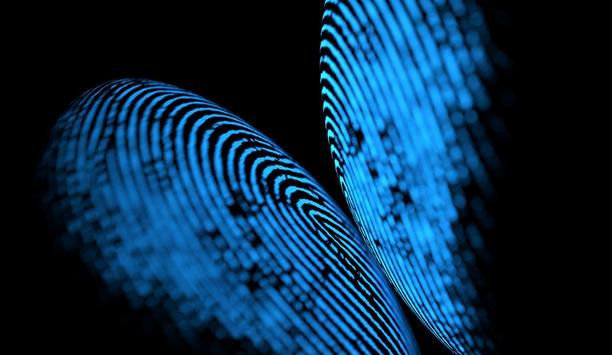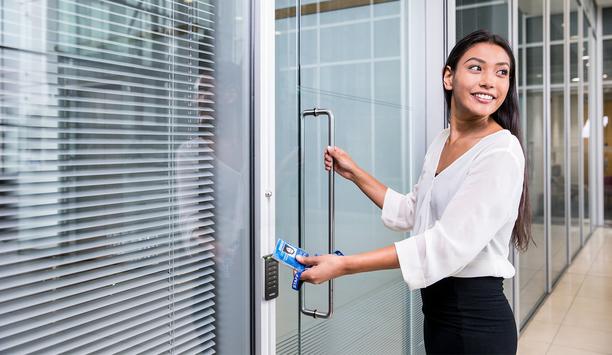Household adoption of smart home systems currently sits at 12.1% and is set to grow to 21.4% by 2025, expanding the market from US$ 78.3 billion to US$ 135 billion, in the same period. Although closely linked to the growth of connectivity technologies, including 5G, tech-savvy consumers are also recognizing the benefits of next-generation security systems, to protect and secure their domestic lives.
Biometric technologies are already commonplace in our smartphones, PCs and payment cards, enhancing security without compromising convenience. Consequently, manufacturers and developers are taking note of biometric solutions, as a way of leveling-up their smart home solutions.
Biometrics offer enhanced security
As with any home, security starts at the front door and the first opportunity for biometrics to make a smart home genius lies within the smart lock. Why? Relying on inconvenient unsecure PINs and codes takes the ‘smart’ out of smart locks.
As the number of connected systems in our homes increase, we cannot expect consumers to create, remember and use an ever-expanding list of unique passwords and PINs. Indeed, 60% of consumers feel they have too many to remember and the number can be as high as 85 for all personal and private accounts.
Biometric solutions strengthen home access control
Biometric solutions have a real opportunity to strengthen the security and convenience of home access control
Doing this risks consumers becoming apathetic with security, as 41% of consumers admit to re-using the same password or introducing simple minor variations, increasing the risk of hacks and breaches from weak or stolen passwords.
Furthermore, continually updating and refreshing passwords, and PINs is unappealing and inconvenient. Consequently, biometric solutions have a real opportunity to strengthen the security and convenience of home access control.
Positives of on-device biometric storage
Biometric authentication, such as fingerprint recognition uses personally identifiable information, which is stored securely on-device. By using on-device biometric storage, manufacturers are supporting the 38% of consumers, who are worried about privacy and biometrics, and potentially winning over the 17% of people, who don’t use smart home devices for this very reason.
Compared to conventional security, such as passwords, PINs or even keys, which can be spoofed, stolen, forgotten or lost, biometrics is difficult to hack and near impossible to spoof. Consequently, homes secured with biometric smart locks are made safer in a significantly more seamless and convenient way for the user.
Biometric smart locks
Physical access in our domestic lives doesn’t end at the front door with smart locks. Biometrics has endless opportunities to ease our daily lives, replacing passwords and PINs in all devices. Biometric smart locks provide personalized access control to sensitive and hazardous areas, such as medicine cabinets, kitchen drawers, safes, kitchen appliances and bike locks. They offer effective security with a touch or glance.
Multi-tenanted sites, such as apartment blocks and student halls, can also become smarter and more secure. With hundreds of people occupying the same building, maintaining high levels of security is the responsibility for every individual occupant.
Biometric smart locks limit entry to authorized tenants and eliminate the impact of lost or stolen keys, and passcodes. Furthermore, there’s no need for costly lock replacements and when people leave the building permanently, their data is easily removed from the device.
Authorized building access
Like biometric smart locks in general, the benefits extend beyond the front door
Like biometric smart locks in general, the benefits extend beyond the front door, but also throughout the entire building, such as washing rooms, mail rooms, bike rooms and community spaces, such as gyms.
Different people might have different levels of access to these areas, depending on their contracts, creating an access control headache. But, by having biometric smart locks, security teams can ensure that only authorized people have access to the right combination of rooms and areas.
Convenience of biometric access cards
Additionally, if building owners have options, the biometric sensors can be integrated into the doors themselves, thereby allowing users to touch the sensor, to unlock the door and enter. Furthermore, the latest technology allows biometric access cards to be used.
This embeds the sensor into a contactless keycard, allowing the user to place their thumb on the sensor and tap the card to unlock the door. This may be preferable in circumstances where contactless keycards are already in use and can be upgraded.
Smarter and seamless security
In tandem with the growth of the smart home ecosystem, biometrics has real potential to enhance our daily lives, by delivering smarter, seamless and more convenient security. Significant innovation has made biometrics access control faster, more accurate and secure.
Furthermore, today’s sensors are durable and energy efficient. With the capacity for over 10 million touches and ultra-low power consumption, smart home system developers no longer have to worry about added power demands. As consumers continue to invest in their homes and explore new ways to secure and access them, biometrics offers a golden opportunity for market players, to differentiate and make smart homes even smarter.
From facial recognition to LiDAR, explore the innovations redefining gaming surveillance





























